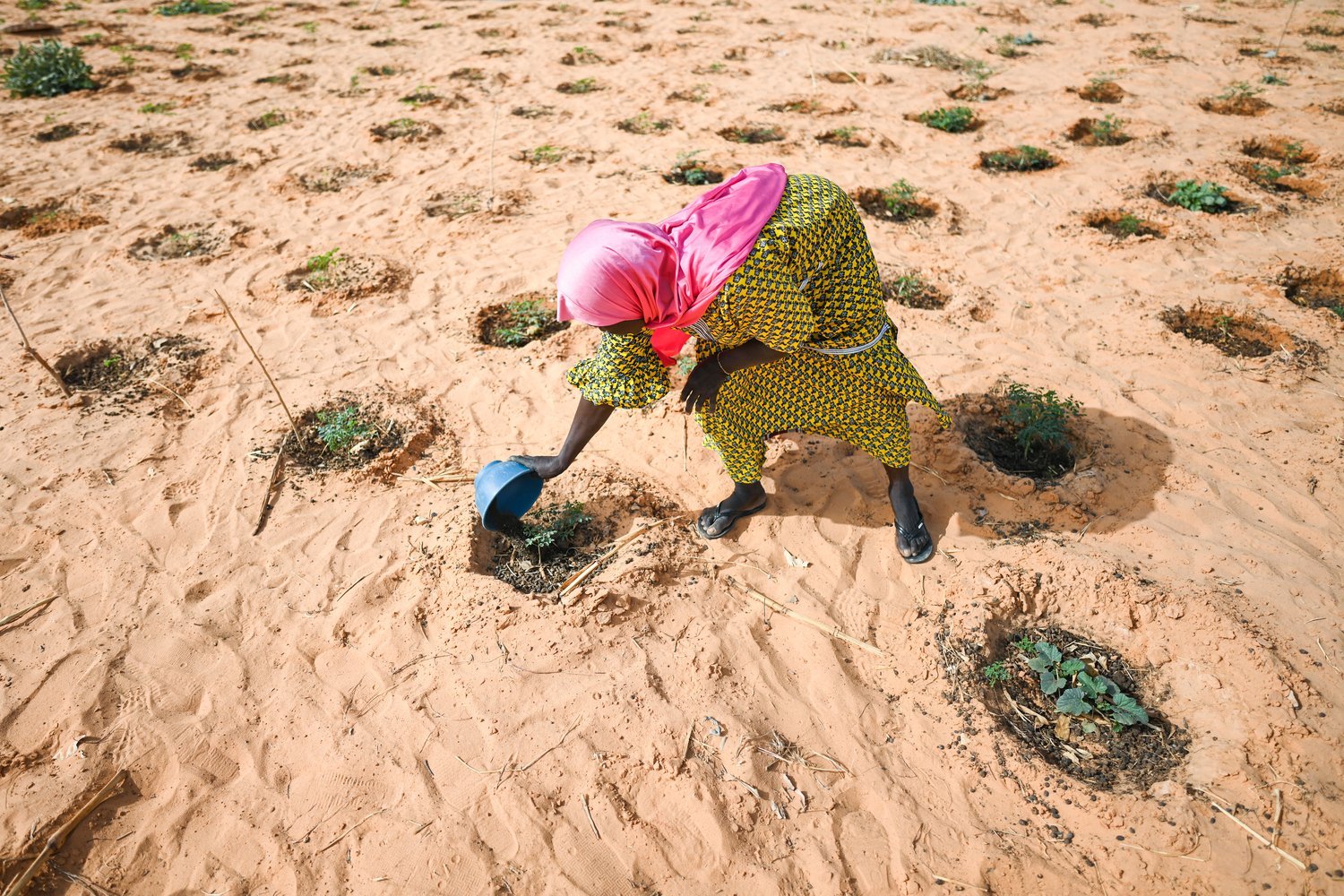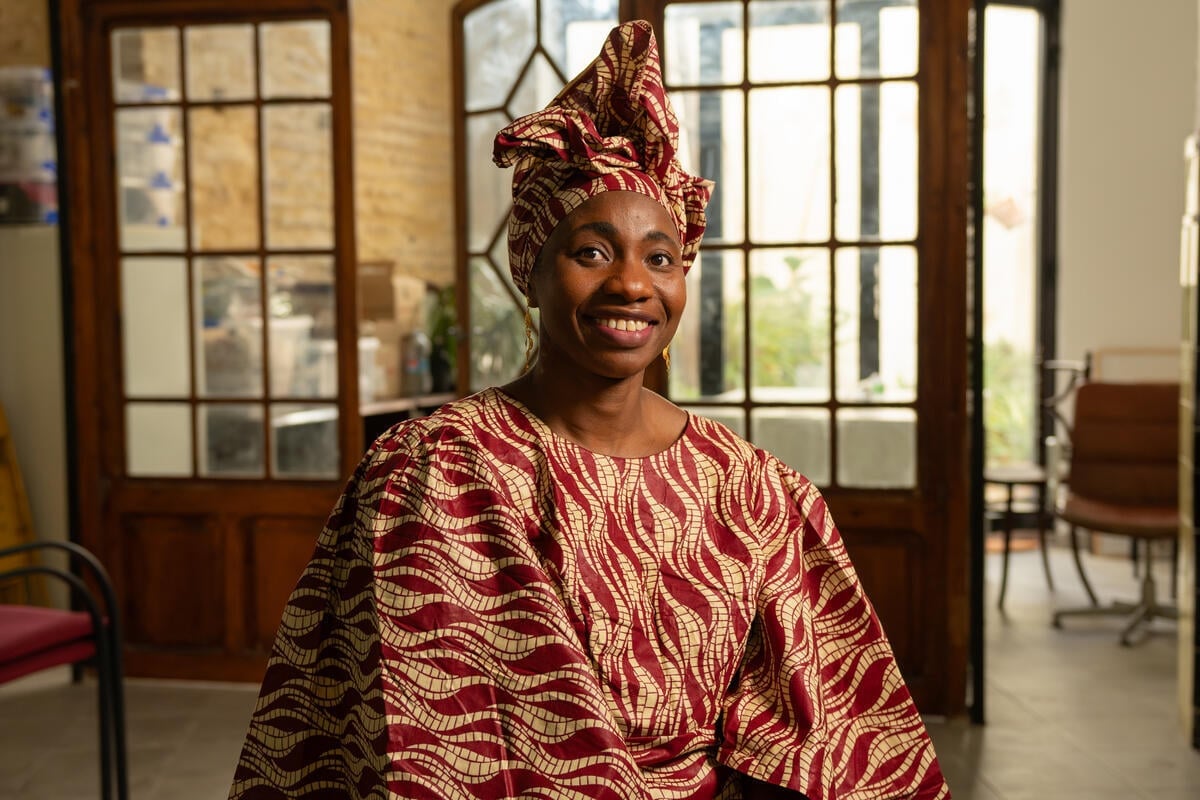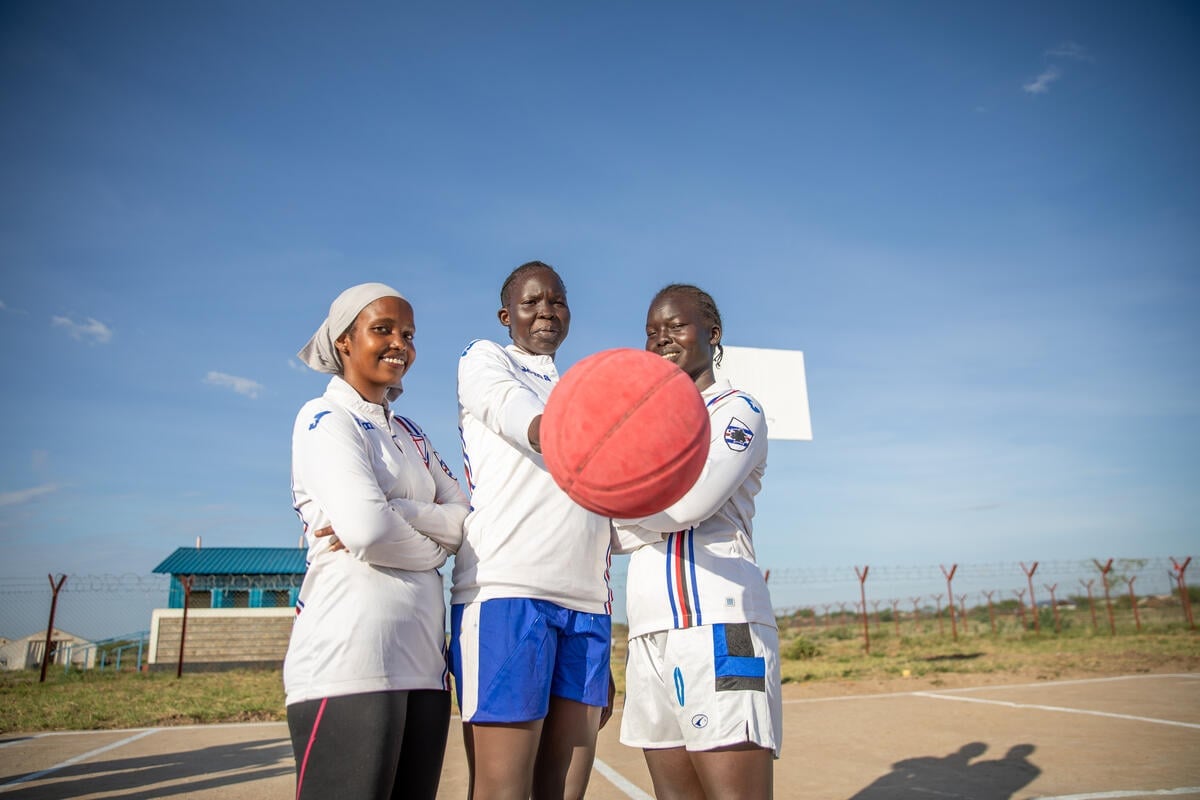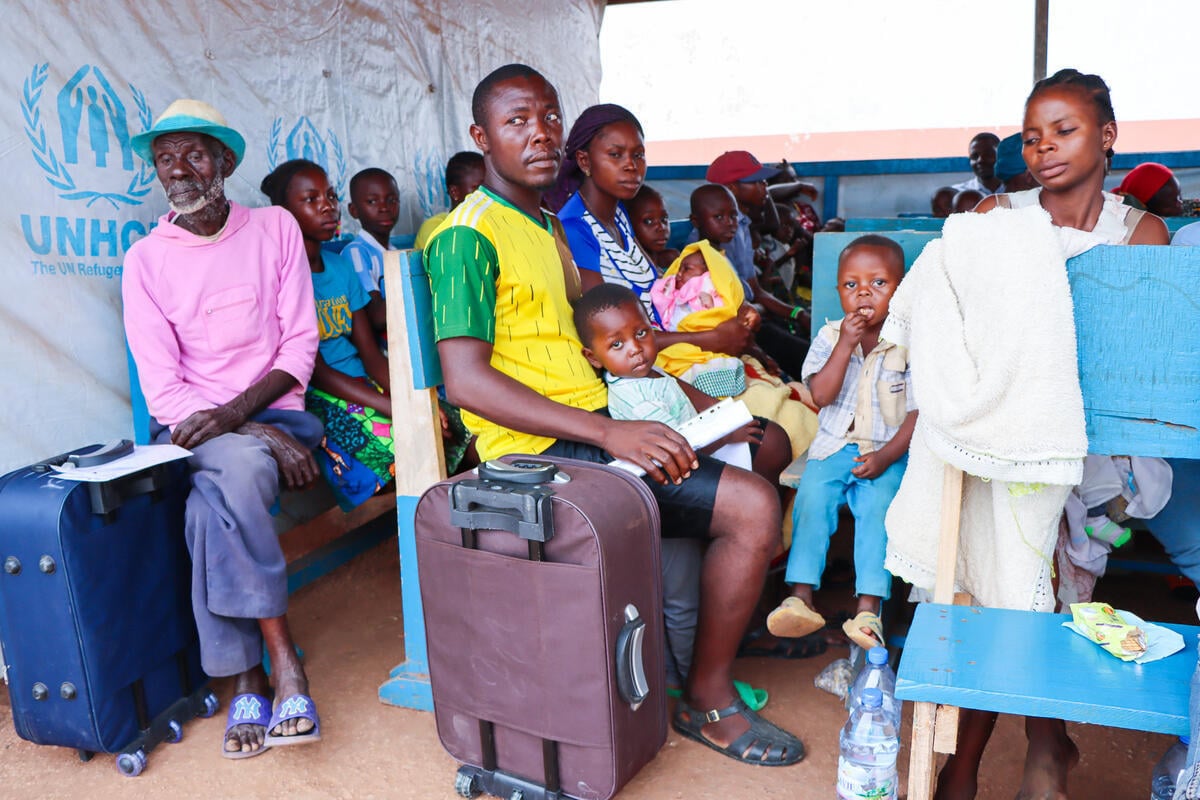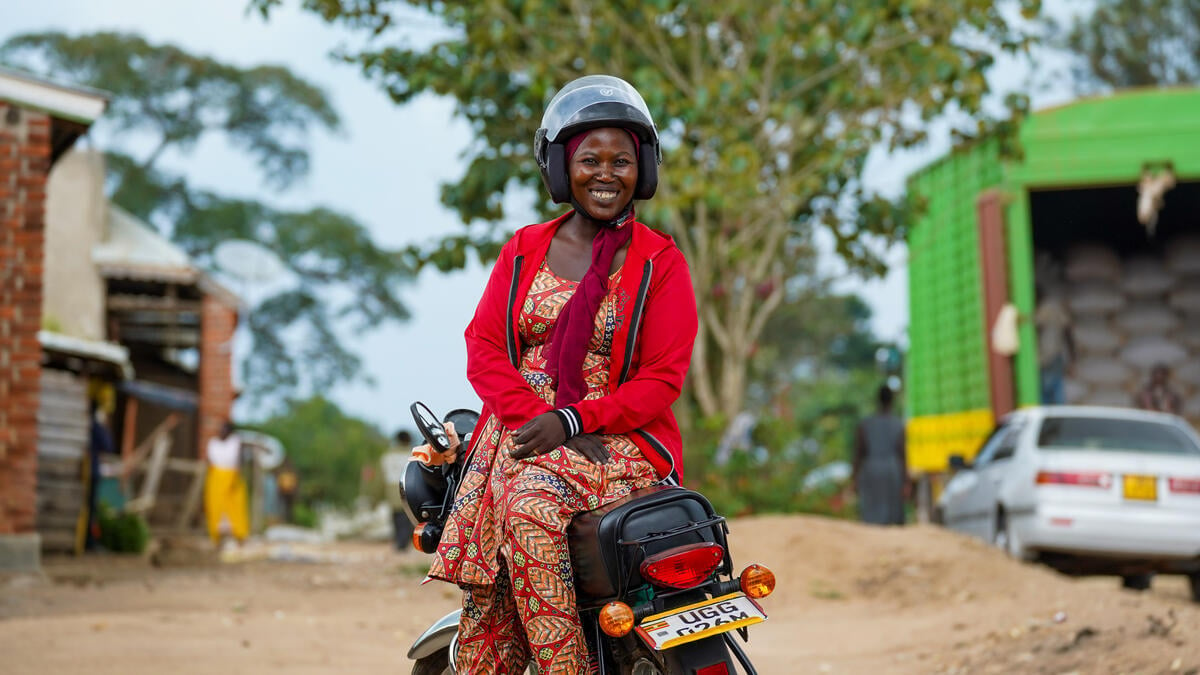Rohingya refugees face hunger and loss of hope after latest ration cuts
Rohingya refugees face hunger and loss of hope after latest ration cuts

Rohingya refugee Rahima Khatun and her family share a meal. Following the ration cuts, she has been forced to skip meals so her two children can eat.
After scanning the rows of lentils, garlic, potato, onions, eggs and rice on offer, she begins sobbing at her meagre selection – a small bottle of cooking oil and a bag of red chilies – the only items she can afford with the remaining credit on her prepaid food voucher of just $8 a month.
“I do not know what I will do – how will I survive on this, along with the little rice I have left for the rest of the month? My neighbours used to help when I ran out of food, but now they are also unable to cope,” she said, her hands shaking as she stuffed her items into a big burlap sack, which looks just as empty as when she arrived.
Nearly one million Rohingya remain stranded in extremely overcrowded, and sometimes dangerous conditions in these camps in southern Bangladesh, the majority after fleeing violence in Myanmar nearly six years ago.
The food assistance they receive from the World Food Programme, WFP, has been the only reliable source they can count on to meet their basic food and nutrition needs. But since the start of the year, this lifeline has been under severe pressure due to reduced donor funding.
Food rations down to 27 cents a day
Faced with funding shortfalls, WFP have had to make difficult choices in order to sustain food assistance until the end of the year. In March, the value of the food vouchers for camp residents was reduced from $12 per person per month to $10, and in June, to just $8 – or 27 cents a day.
The cuts came just weeks after thousands of refugees lost their homes to Cyclone Mocha, which followed a major fire earlier this year.
“I had to reduce the portion of my children’s meals – but for how long? There is not enough food available for my family and I really do not know how we will survive,” said Morjina, 27, a single mother of three young children.
As a woman-headed household, her family receives extra support from WFP, which has been able to maintain its additional support to the most vulnerable such as women, children, the elderly, and people with disabilities. With fresh food vouchers they can buy vegetables, fruits and protein-rich food to supplement their now compromised diet.
Alongside fresh food assistance, WFP implements nutrition programmes for pregnant and breastfeeding women and children under five years of age. Despite this additional support, vulnerable households are still struggling to make ends meet. The only solution to prevent the situation from deteriorating further is to restore the full rations for the entire Rohingya population immediately.
“The ration cuts are our last resort. Many donors have stepped forward with funding but what we have received is simply not enough,” said Dom Scalpelli, WFP Country Director. “It is absolutely critical that we give the Rohingya families back the full assistance they deserve. The longer we wait, the more hunger we will see in the camps – already we are seeing more children being admitted into malnutrition treatment programmes.”
Donor funding falling
It is not just WFP that is feeling the pinch from declining levels of international donor funding as the situation of Rohingya refugees becomes protracted. The UN’s 2023 humanitarian response plan for the Rohingya is only a quarter funded. More and more humanitarian agencies are now being forced to continue only with the most critical interventions, and that means basic needs are going unmet. The impacts of such cuts are particularly devastating for women and children, who make up more than 75 per cent of the refugee population and face higher risks of abuse, exploitation and gender-based violence.
Without enough food and no means of generating a legal income, refugees have resorted to increasingly desperate measures to survive such as child marriage and child labour, as well as embarking on dangerous boat journeys.
Apart from WFP’s additional assistance to vulnerable families, small-scale livelihood initiatives scattered across the camps offer hope and a key to preventing the humanitarian situation from getting worse.
With the support of the UN Refugee Agency, UNHCR, and national NGO partner, Mukti, dozens of refugee families are growing their own vegetables like bitter gourd, pumpkin and chilies on the few tiny patches of arable land available within the congested camps. This not only allows them to supplement what WFP can provide but also to restore some sense of dignity.
“The cuts in food aid have affected everyone but I am lucky that I can at least supplement with the few vegetables that I grow here to feed my family. Others are not so lucky,” said Minara, a mother of two, as she proudly points to her small harvest of bitter gourd.
In the next camp over, a Jute Bag Production Centre, jointly operated by UNHCR and partner organization, NGO Forum for Public Health, is buzzing with activity as 150 refugee women are trained on how to use electric sewing machines while receiving a stipend for their work.
Most of the women that work 4-hour shifts at the centre are heading up their households as widows or divorcees and are helping to change community attitudes towards women working outside the home.
In another camp, Japanese company Fast Retailing (UNIQLO’s holding company) is helping to build the skills and capacities of 1,000 Rohingya refugee women by 2025.
Need for more livelihood opportunities
Despite such initiatives, much more support will be needed from the international community to ensure that life-sustaining assistance is delivered to refugees and that investments are made in surrounding host communities.
In the longer term, Johannes van der Klaauw, UNHCR Representative to Bangladesh, said the only way to prevent the humanitarian situation in the camps from deteriorating further is by investing in education, skills training and livelihood opportunities.
“This would allow refugees to become self-reliant and partially fulfill their basic needs through their own means – and above all, to prepare them for rebuilding their lives when they can voluntarily and safely return to Myanmar.”
Without such opportunities, Rohingya refugees like Morjina view the latest ration cuts as spelling not just more hunger, but less hope.
“Right now, our fate is not in our hands,” she said. “We are unable to go back home, we have no freedom of movement here, and hunger is the only way we pass our days.”


